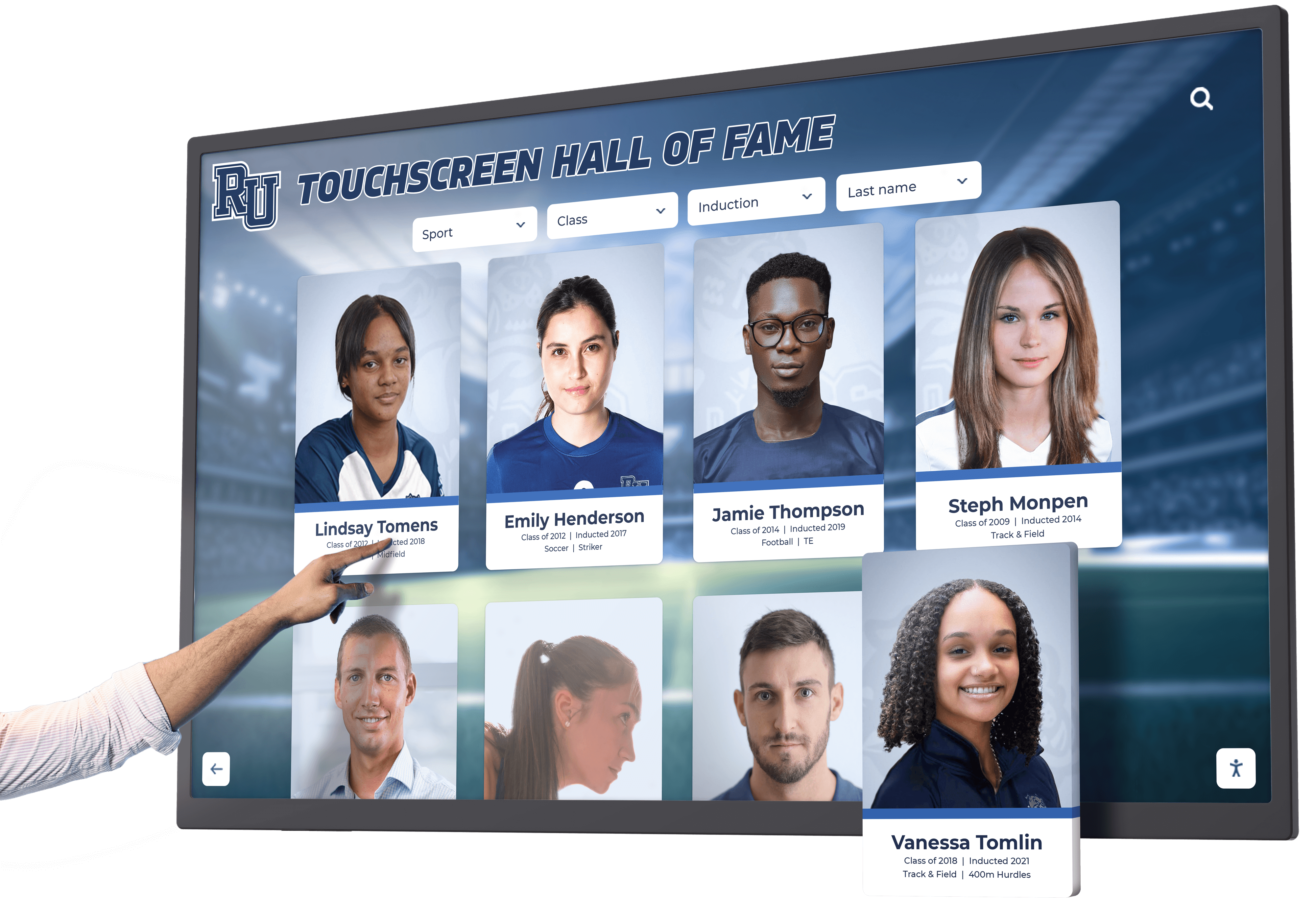Key Takeaways
Discover how tennis hall of fame touchscreen displays revolutionize recognition for tennis clubs, schools, and organizations. Complete guide to interactive digital recognition systems.
Understanding Tennis Hall of Fame Recognition
Tennis recognition programs serve diverse organizations across the tennis ecosystem, from professional institutions to local clubs and school programs, each honoring excellence within their respective communities while sharing common goals of preservation and inspiration.
The International Tennis Hall of Fame Legacy
The International Tennis Hall of Fame, located in Newport, Rhode Island, represents the sport’s highest honor. Founded in 1954, this prestigious institution recognizes tennis legends who have made exceptional contributions to the sport at all levels, from Grand Slam champions to coaches and contributors who elevated tennis worldwide.
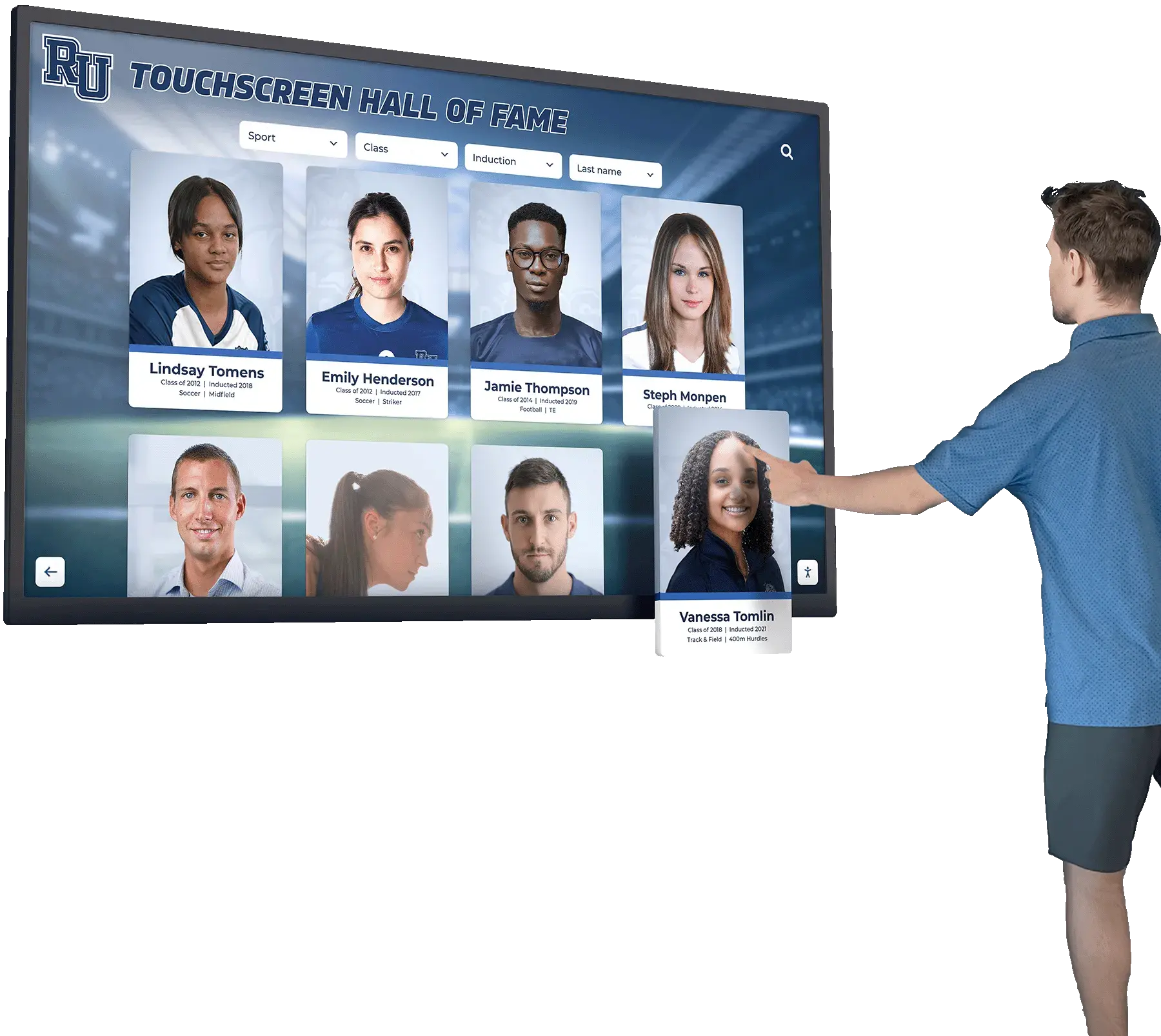
In recent years, the International Tennis Hall of Fame has embraced digital innovation through partnerships focused on preserving tennis history through modern technology. According to their announcement in March 2022, Infosys became their Official Digital Innovation Partner, helping amplify efforts in preserving and celebrating tennis history through digital advances while enhancing fan experience. This collaboration was extended through 2028, demonstrating the institution’s commitment to technological innovation.
The museum has embarked on an ambitious multi-year project to digitize all of its 25,000+ artifacts for public viewing through a series of digital exhibits. As of 2025, 11 digital exhibits are available highlighting different aspects of the sport, with the newest being “Etched in History,” featuring 360-degree views of 68 different trophies. This commitment to digital preservation reflects broader trends transforming how tennis organizations approach recognition and engagement.
Tennis Recognition Beyond Professional Level
While the International Tennis Hall of Fame honors professional excellence, comprehensive recognition systems exist across the tennis landscape serving schools, clubs, collegiate programs, and regional organizations.
Collegiate Tennis Programs create institutional halls of fame recognizing exceptional student-athletes who achieved All-American honors, led teams to conference championships or NCAA tournament success, set program records, or exemplified institutional values while competing. These recognition systems strengthen recruiting by demonstrating program tradition to prospective student-athletes while engaging alumni through meaningful acknowledgment of their achievements.
High School Tennis Programs honor athletes who earned all-state recognition, conference championships, individual state titles, or college scholarships, along with coaches who built winning traditions over sustained careers. Creating comprehensive athletic recognition programs helps high schools celebrate tennis excellence alongside other sports in unified recognition systems.
Tennis Clubs and Academies recognize club champions, tournament winners, long-tenured members, significant contributors, and players who achieved success at higher competitive levels after developing skills at their facilities. These programs strengthen member engagement, create aspirational environments for developing players, and preserve institutional history that distinguishes established clubs from newcomers.
Regional and State Tennis Associations maintain halls of fame celebrating the most outstanding contributors to tennis within their geographic areas, ensuring that regional legends receive appropriate recognition even when they may not achieve the national prominence required for professional hall of fame consideration.
Benefits of Touchscreen Technology for Tennis Recognition
Interactive touchscreen displays fundamentally transform tennis recognition capabilities compared to traditional static plaques and trophy cases, addressing longstanding limitations while creating enhanced engagement opportunities.
Unlimited Recognition Capacity
Traditional physical displays face inherent space constraints that force difficult decisions about which achievements receive recognition. Wall space limitations mean that as programs accumulate honorees across decades, older recognition may be removed to accommodate new inductees, or deserving achievements go unrecognized entirely.
Digital Capacity Advantages:
- Recognize unlimited honorees without space constraints
- Include comprehensive tournament histories spanning decades
- Honor all achievement categories without prioritization
- Accommodate team and individual recognition equally
- Archive historical content that remains perpetually accessible
- Expand recognition over time without physical limitations
Tennis programs can honor every club champion, every all-state player, every significant tournament winner, and every coaching milestone throughout history without being forced to choose whose accomplishments fit on available wall space.
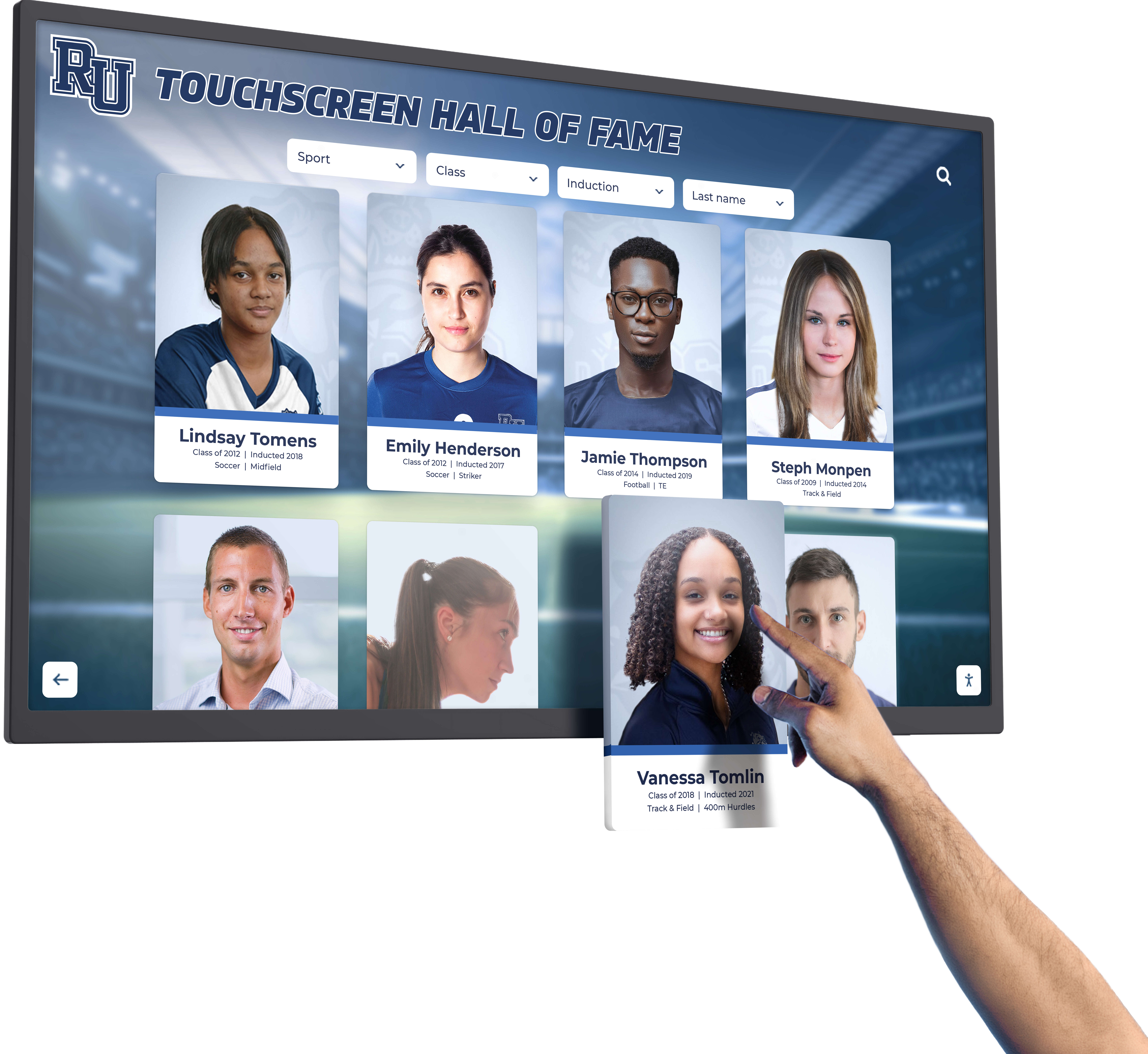
This unlimited capacity proves particularly valuable for tennis programs with long, rich histories. Clubs celebrating 50, 75, or 100-year anniversaries can comprehensively recognize all significant achievements throughout their existence rather than highlighting only recent decades or legendary figures whose physical plaques fit available space.
Rich Multimedia Storytelling Capabilities
Traditional plaques provide names, dates, and brief achievement descriptions, limiting information to what physically fits on metal or wood. Tennis hall of fame touchscreen displays enable comprehensive multimedia profiles that tell complete stories about athletes, achievements, and tennis moments.
Multimedia Content Possibilities:
Action Photography: High-resolution images capturing signature moments—championship points, powerful serves, celebration scenes—that bring achievements to life visually and create emotional connections viewers remember long after leaving displays.
Video Highlights: Match footage showing playing styles, signature shots, and memorable moments; championship match clips preserving victories; interview segments where honored players share insights, reflections, and advice; and documentary-style career retrospectives providing comprehensive context about achievements and impacts.
Detailed Statistics and Records: Complete career statistics and tournament results; year-by-year performance tracking; head-to-head records against rivals; comparison with program or club records; and context about competitive era and playing conditions.
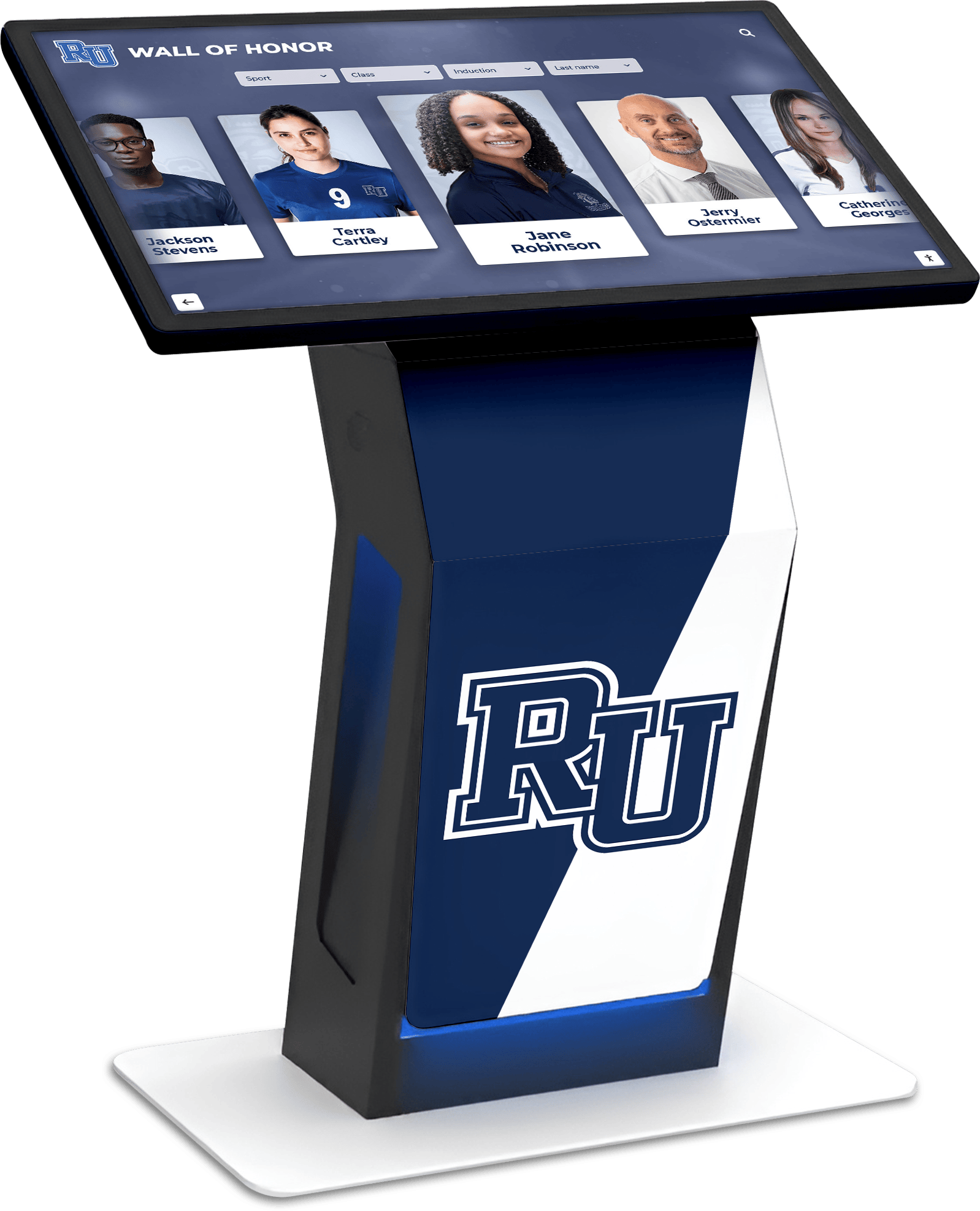
Biographical Narratives: Personal stories about tennis journeys; obstacles overcome and adversity faced; training approaches and development paths; post-tennis careers and ongoing involvement with the sport; and reflections about what tennis meant to their lives.
Interactive Tournament Brackets: Clickable bracket displays showing paths to championships; scores from each match; opponent profiles and backgrounds; and context about significance within broader competitive landscape.
This rich content transforms recognition from simple documentation into compelling storytelling that engages visitors, honors achievements appropriately, and preserves tennis heritage comprehensively. Solutions like Rocket Alumni Solutions provide purpose-built platforms specifically designed for athletic recognition, addressing unique needs of tennis programs through features including statistical integration, tournament documentation, and sports-specific categorization.
Instant Content Updates and Maintenance
Traditional physical displays require expensive fabrication and installation for every addition or modification. Adding new inductees means commissioning new plaques, scheduling installation, and paying ongoing costs that accumulate across years and decades.
Tennis hall of fame touchscreen displays enable instant updates through intuitive cloud-based content management systems that non-technical staff can operate independently. Athletic directors, club managers, or dedicated volunteers can add new honorees, update existing profiles, correct errors, schedule future content, and manage all recognition aspects through web-based interfaces accessible from any internet-connected device.
Update Scenarios Benefiting from Digital Systems:
- Annual Inductions: Add new club champions, tournament winners, or special honorees immediately following selection ceremonies rather than waiting weeks or months for physical plaque production
- Career Updates: Recognize when former club players achieve collegiate success, professional rankings, or coaching accomplishments, updating original profiles to reflect ongoing tennis journeys
- Tournament Results: Document current season tournament outcomes, maintaining comprehensive historical records as competitions conclude
- Corrections and Enhancements: Fix any factual errors instantly; add newly discovered photographs or materials; incorporate additional statistics as historical research uncovers forgotten achievements
- Seasonal Featured Content: Rotate highlighted profiles seasonally; feature historical anniversaries and milestones; create thematic presentations around significant dates or events
This maintenance efficiency delivers ongoing value beyond initial installation, enabling tennis programs to maintain current, comprehensive recognition that remains engaging and relevant year after year.
Enhanced Accessibility and Reach
Traditional physical displays exist in single locations—club lounges, school gymnasiums, facility hallways—limiting recognition to those who physically visit. Digital recognition systems extend access dramatically through online platforms that complement physical touchscreen displays.

Extended Access Benefits:
Global Availability: Alumni and former members anywhere worldwide can explore tennis hall of fame content from computers or mobile devices, maintaining emotional connections to organizations and programs regardless of geographic distance.
Recruiting and Marketing: Prospective members or student-athletes research program traditions during remote exploration, discovering competitive excellence and club culture before visiting facilities.
Social Media Integration: Families share athlete profiles through social media channels, amplifying recognition reach while creating organic promotion for tennis programs.
Media Access: Journalists and reporters research historical information for tournament coverage, program features, or anniversary stories, ensuring accurate information while potentially generating publicity.
Preservation Beyond Physical Locations: Recognition remains accessible even if facilities change, relocate, or undergo renovation, ensuring that achievements honored remain perpetually available regardless of physical circumstances.
This accessibility transforms recognition from location-dependent displays into always-available digital resources serving diverse audiences and strengthening connections between tennis organizations and their broader communities.
Implementation Considerations for Tennis Organizations
Successfully implementing tennis hall of fame touchscreen displays requires thoughtful planning addressing technology selection, content development, installation environment, and ongoing management strategies.
Technology Platform Selection
The software platform fundamentally determines usability, functionality, and long-term success of digital recognition systems. Purpose-built athletic recognition platforms provide essential capabilities that generic digital signage software cannot match.
Essential Platform Features:
Intuitive Content Management: User-friendly interfaces requiring no coding or technical expertise; responsive design automatically adapting to all screen sizes and orientations; powerful search and filtering for content discovery; multimedia support for photos, videos, audio, and documents; and cloud-based architecture enabling updates from any internet-connected device.
Sports-Specific Functionality: Tournament bracket displays and competition histories; statistical integration showing career records and achievements; team roster capabilities when recognizing doubles partnerships; chronological timelines tracking program or club history; and sports-specific categorization organizing content logically.
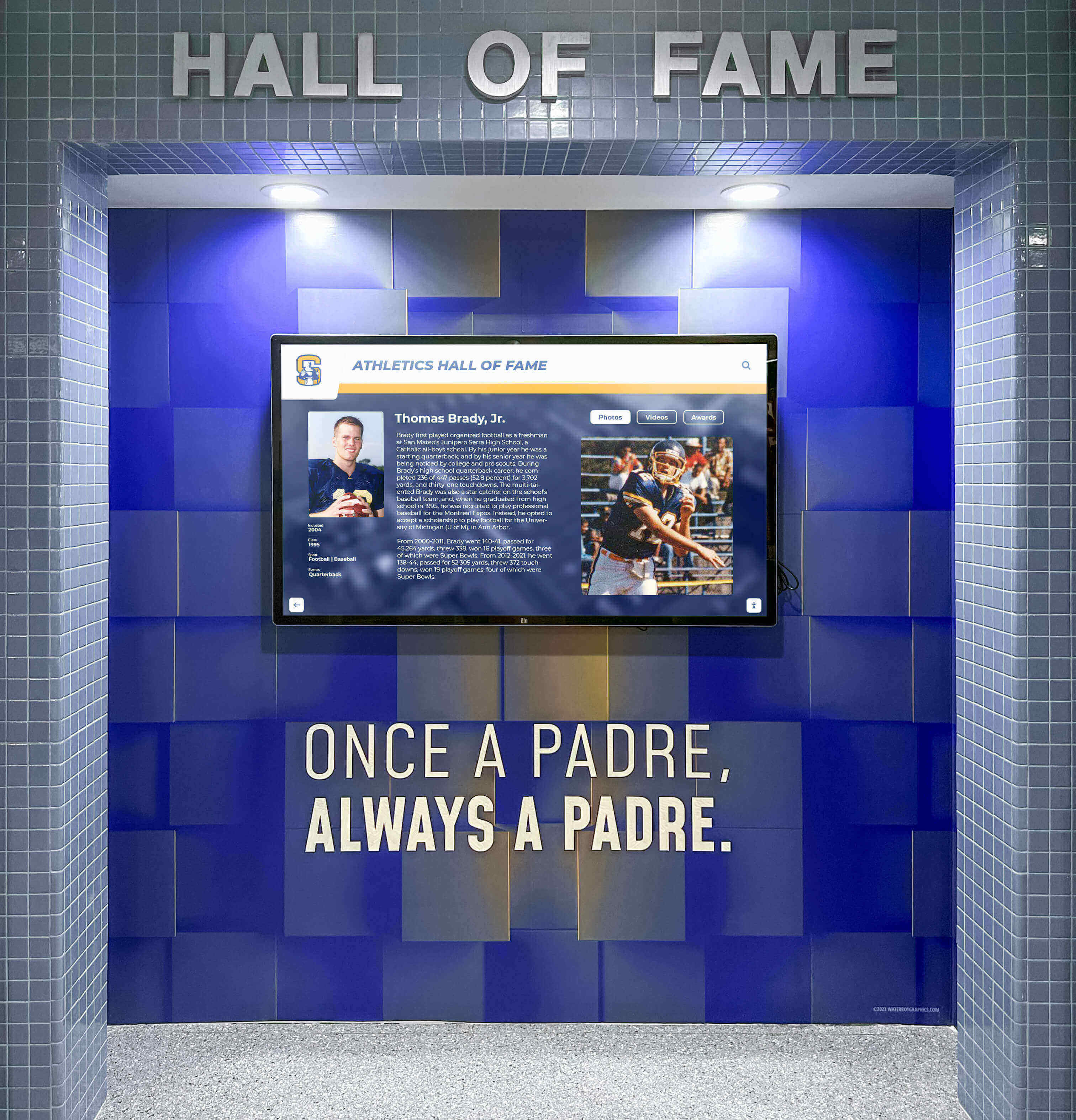
Engagement Analytics: Usage tracking revealing how visitors interact with content; most-viewed profile data identifying audience interests; search query patterns showing what visitors seek; navigation path analysis demonstrating how users explore content; and demographic information about visitor devices and locations when available.
Accessibility Compliance: ADA compliance ensuring visitors with diverse abilities can engage fully; high-contrast designs for visibility; text-to-speech capabilities; keyboard navigation support; and mobile-friendly interfaces accommodating all devices.
Technical considerations for digital recognition systems address infrastructure requirements, hardware specifications, network connectivity, and ongoing technical support that ensure reliable operation.
Hardware and Installation Environment
While software determines functionality, hardware quality and installation environment significantly impact user experience and system longevity.
Hardware Considerations:
Commercial-Grade Displays: Professional touchscreen monitors designed for extended operation with typical lifespans of 50,000+ hours (5-7 years of continuous use); responsive touch technology supporting multi-touch gestures; anti-glare coatings maintaining visibility in various lighting conditions; and robust construction withstanding frequent interaction.
Appropriate Screen Sizing: Match display size to viewing conditions and traffic patterns; smaller 43-55" displays for intimate spaces with individual visitors; larger 65-75" screens for high-traffic areas with multiple simultaneous viewers; and video wall configurations for dramatic installations in large facilities.
Mounting and Placement: Wall-mounted installations providing clean, professional aesthetics; floor kiosk stands enabling placement flexibility in open areas; recessed installations integrating displays flush with wall surfaces; and custom millwork options matching facility architectural character.
Environmental Factors: Ambient lighting conditions affecting screen visibility; physical security protecting valuable equipment from damage or theft; viewing distance and height ensuring comfortable interaction for diverse visitors; supporting signage providing context and instruction; and power and network connectivity requirements.
The installation environment should position tennis hall of fame displays prominently in locations where members, visitors, and prospective players naturally gather—club lounges, pro shop areas, facility entrances, or tournament viewing areas. Strategic placement maximizes visibility while creating natural focal points for ceremonies and celebrations.
Content Development Strategy
Technology enables recognition displays, but compelling content drives engagement and appropriately honors tennis achievement. Successful implementation requires systematic approaches to content gathering, profile development, and ongoing maintenance.
Initial Content Development:
Historical Research: Review club records, tournament results, and membership archives; consult with long-tenured members and staff familiar with program history; examine media coverage in local newspapers and tennis publications; contact state and regional tennis associations for historical records; and interview former players, coaches, and club champions about achievements and memories.
Profile Creation Standards: Establish consistent format templates ensuring professional presentation; determine appropriate content depth for different recognition tiers; develop writing guidelines maintaining consistent voice and tone; create quality standards for photographs and multimedia; and implement review processes catching errors before publication.
Photography and Media Collection: Request materials from honored individuals and families; digitize historical photographs from club archives; capture video interviews during induction ceremonies; coordinate with tournament organizers for competition footage; and commission professional photography when original materials are unavailable.
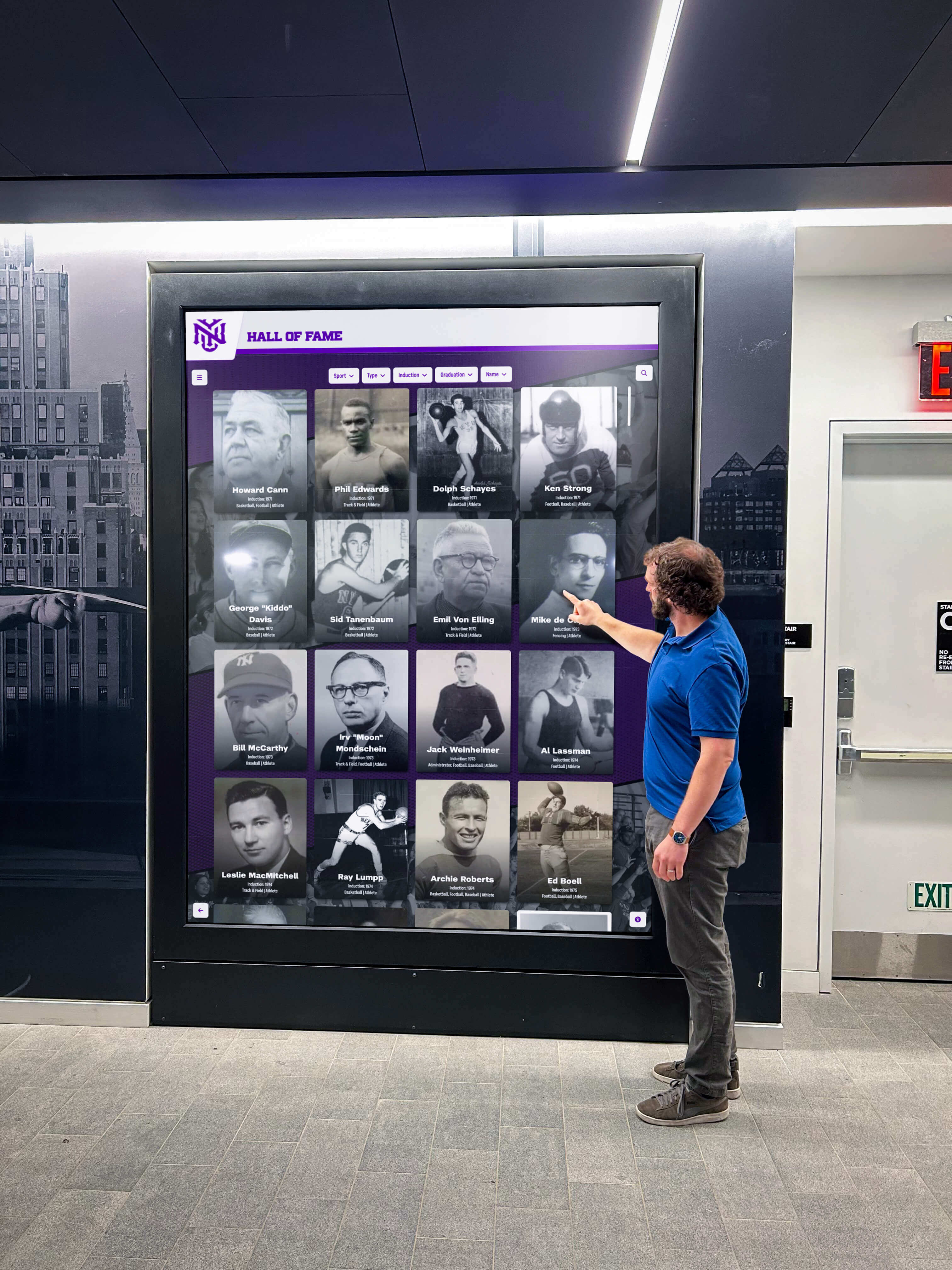
Tournament and Achievement Documentation: Compile comprehensive tournament results and winners; document club championships and competition histories; preserve records about significant matches and memorable moments; catalog individual statistics and career achievements; and maintain team recognition for successful doubles partnerships.
Ongoing Content Management: Establish regular schedules for adding new recognition after tournaments; update existing profiles as honored players achieve new milestones; rotate featured content seasonally maintaining engagement; and maintain quality standards as recognition expands over time.
Comprehensive content development requires significant initial effort but creates lasting value through preserved tennis heritage and meaningful recognition that resonates across generations of players and members.
Tennis-Specific Recognition Applications
Tennis hall of fame touchscreen displays serve diverse recognition needs across the tennis ecosystem, from professional institutions to grassroots programs, each adapting technology to serve their unique communities and objectives.
Tennis Club Recognition Programs
Private and public tennis clubs benefit tremendously from digital recognition systems that honor club champions, tournament winners, long-tenured members, and contributors who elevated facilities and programs.
Club Championship Recognition: Honor winners of club tournaments across all competitive categories—men’s and women’s singles, doubles, and mixed doubles; senior and super-senior divisions; junior development programs; and league team championships. Comprehensive recognition creates aspirational environments where current members see concrete examples of achievement possible through dedication and improvement.
Milestone Member Recognition: Celebrate members reaching significant tenure milestones—10, 25, 50 years of membership; recognize lifetime members who supported clubs through sustained engagement; honor significant donors whose philanthropic support enabled facility improvements; and acknowledge volunteers who contributed thousands of hours to club operations, tournament organization, or program development.
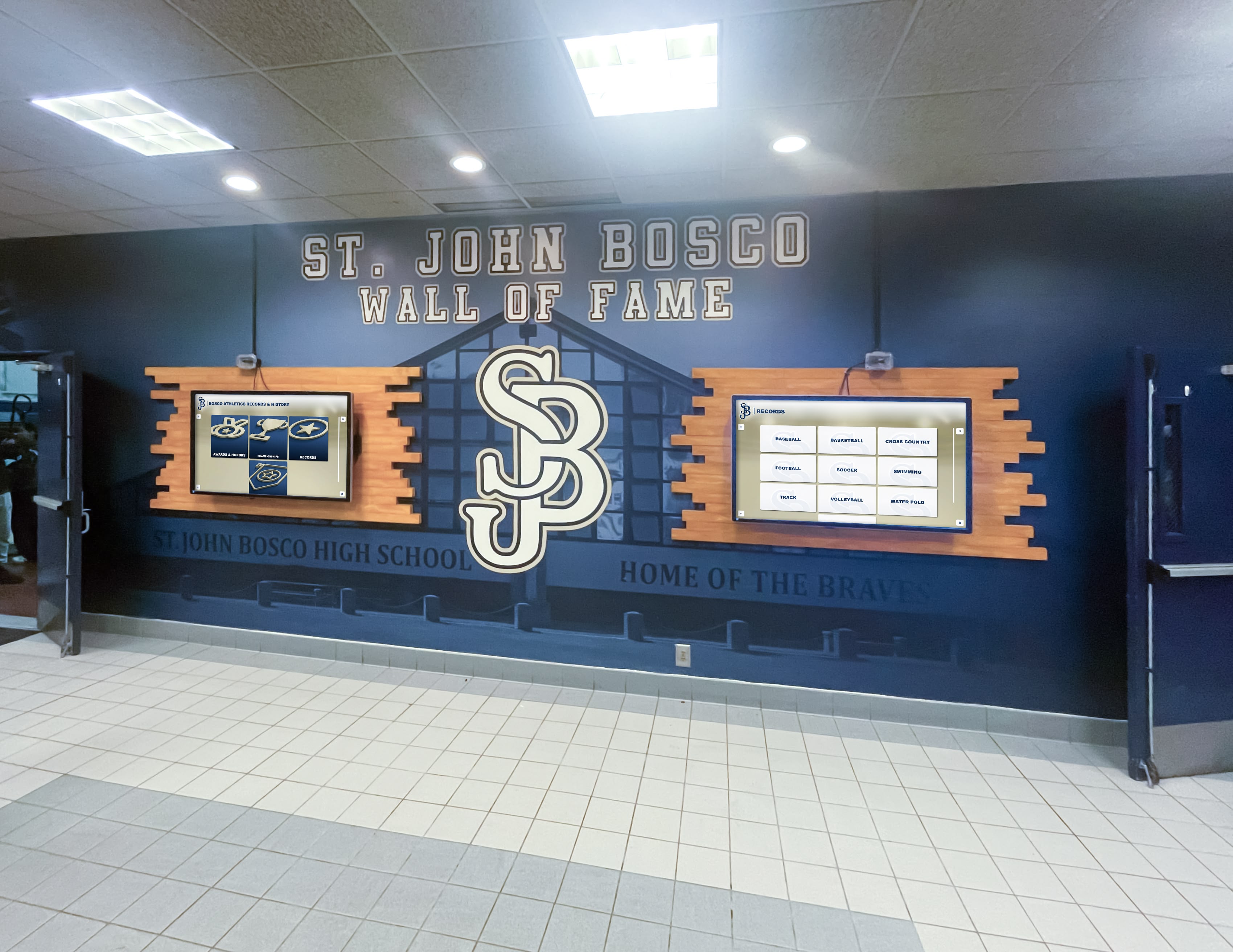
Tournament History Archives: Preserve complete historical records of club tournaments; maintain year-by-year results showing competition evolution; document memorable matches and significant upsets; and create searchable databases enabling members to research personal competitive histories or discover family connections to club tradition.
Teaching Professional Recognition: Honor head professionals and teaching staff who shaped club culture and developed generations of players; recognize professionals who achieved certification milestones or industry recognition; and document contributions of coaches whose expertise elevated competitive programs.
Digital systems prove particularly valuable for established clubs with decades or centuries of history. Rather than limiting recognition to recent champions whose plaques fit available wall space, comprehensive digital platforms honor all club champions throughout history, strengthening connections between current members and tennis traditions established by previous generations.
High School and College Tennis Recognition
Educational institutions implement tennis recognition within broader athletic hall of fame programs celebrating excellence across all sports, or create tennis-specific recognition highlighting unique characteristics of tennis competition.
Individual Achievement Recognition: Honor state champions and tournament place-finishers; recognize all-state, all-conference, or all-district selections; celebrate statistical achievement leaders—career wins, winning streaks, undefeated seasons; and acknowledge athletes earning collegiate scholarships to continue playing.
Team Championship Recognition: Celebrate conference championship teams; honor state tournament qualifiers and champions; recognize exceptional season records and undefeated teams; and document memorable victories against traditional rivals.
Coaching Excellence: Honor career milestone achievements—100, 200, 300 dual meet victories; recognize coaches leading teams to conference or state championships; celebrate longevity and sustained program building; and acknowledge coaches developing players who achieved higher-level success.
Academic-Athletic Balance: Highlight student-athletes who excelled academically while competing; recognize academic all-conference and all-state honorees; celebrate scholar-athletes who balanced athletic excellence with academic achievement; and demonstrate how tennis teaches time management, discipline, and dedication transferable to academic success.
Educational recognition serves multiple strategic purposes beyond honoring past achievement. It strengthens recruiting by demonstrating program tradition to prospective student-athletes; creates engagement opportunities with alumni who feel valued through recognition; preserves institutional athletic history that might otherwise fade; and inspires current players by showcasing concrete examples of excellence achieved in their program.
Tennis Academy and Development Program Recognition
Competitive tennis academies and development programs utilize hall of fame displays differently than clubs or schools, emphasizing player development, competitive achievement at junior levels, and pathways to college and professional tennis.
Development Milestone Recognition: Celebrate players achieving significant USTA ranking milestones; honor sectional and national junior tournament winners; recognize players competing at prestigious junior events—Orange Bowl, Easter Bowl, USTA National Championships; and document progression through competitive development levels.
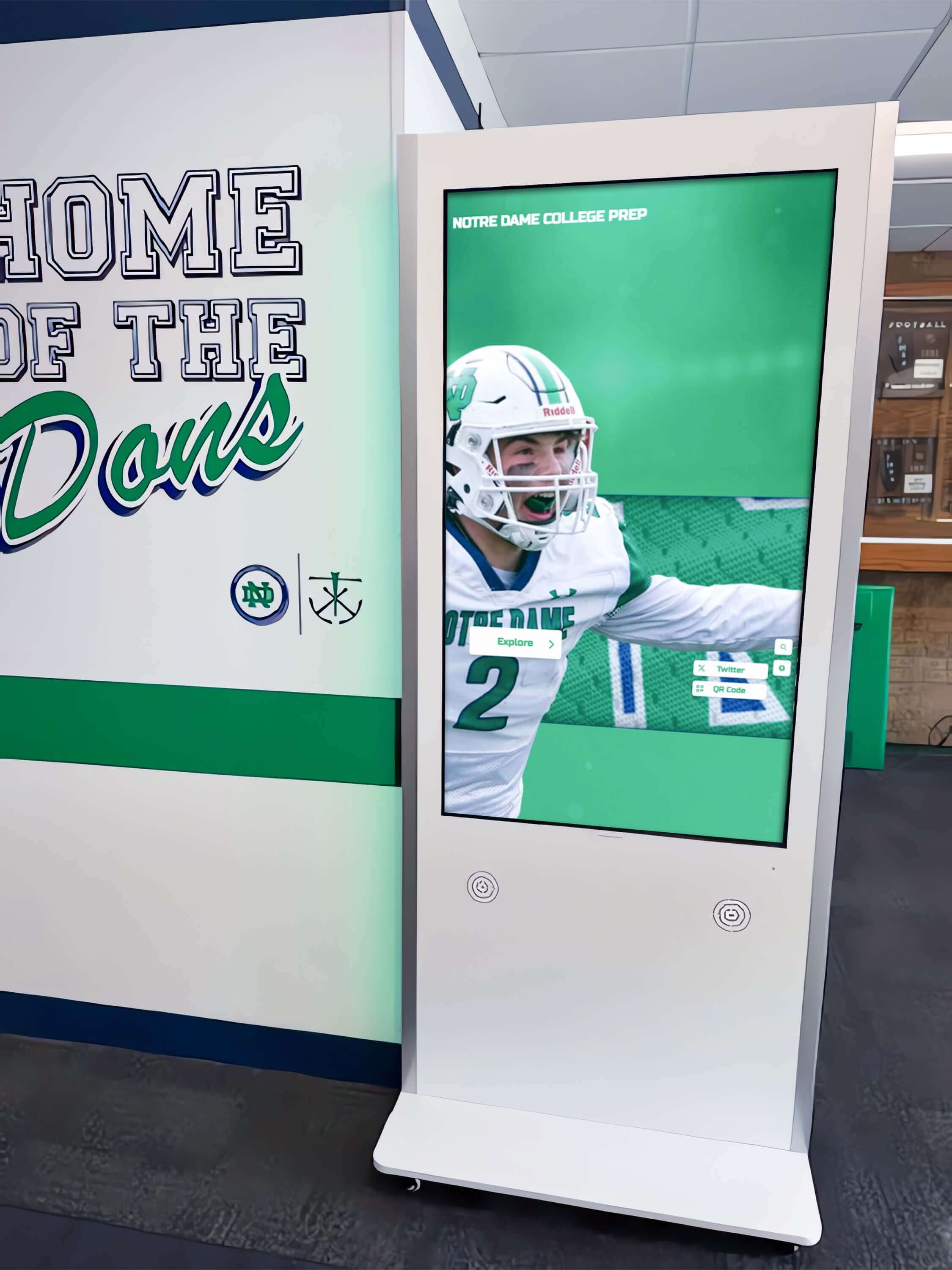
College Placement Success: Highlight players earning Division I, II, or III scholarships; showcase which colleges and universities academy alumni attend; provide proof points demonstrating academy development effectiveness; and create aspirational examples for current students pursuing college tennis opportunities.
Professional Achievement: Recognize academy alumni who achieved professional rankings; document ATP/WTA tour success and career highlights; celebrate players competing at Grand Slam events; and maintain connections between programs and successful professionals who developed foundational skills at academies.
Coaching Staff Recognition: Honor coaches based on student success and development; recognize coaching certifications and professional credentials; celebrate coaches whose students achieved collegiate or professional success; and document coaching philosophies and approaches that produced results.
Tennis academy recognition serves recruiting purposes by providing tangible evidence of development program quality to prospective families evaluating competitive training options. Comprehensive documentation of player pathways from academy training to college tennis and beyond demonstrates program effectiveness while creating motivational environments for current students.
Best Practices for Tennis Hall of Fame Programs
Successful tennis recognition programs share common characteristics around selection criteria, content quality, ceremony design, and ongoing management that ensure fairness, maintain credibility, and create meaningful experiences.
Establishing Clear Selection Criteria
Program credibility depends on transparent, consistently applied standards that members, families, and communities understand and respect. Clear criteria prevent perceptions of favoritism while ensuring recognition maintains appropriate prestige.
Achievement-Based Standards: Define specific thresholds for automatic recognition—club championships, state titles, all-state selection, career win milestones; establish tournament achievement levels qualifying for honor—conference championships, sectional titles, national tournament participation; and document statistical benchmarks when applicable to recognition categories.
Nomination and Selection Processes: Implement systematic identification of deserving honorees; establish nomination procedures enabling broad community input; create selection committees with diverse representation; and document decision-making processes transparently while protecting confidentiality of individual votes and discussions.

Character and Citizenship Considerations: Ensure recognition extends to those who embodied positive values beyond athletic skill; require demonstration of sportsmanship and ethical conduct; consider leadership influence on teammates and programs; and evaluate representation of organizational or program values.
Updating Recognition Standards: Review criteria periodically ensuring they remain relevant to current competitive environments; adjust thresholds as programs grow and competitive standards evolve; and maintain consistency while allowing thoughtful evolution of recognition programs over time.
Published criteria communicated clearly to all stakeholders build confidence in program integrity while helping athletes understand what achievement levels merit recognition. Transparency about selection processes demonstrates fairness while managing expectations appropriately.
Creating Compelling Induction Ceremonies
Recognition ceremonies create memorable experiences for honorees, families, and tennis communities while generating excitement that strengthens program engagement and visibility. Well-planned events honor achievements appropriately while celebrating tennis culture and tradition.
Ceremony Elements and Format: Formal presentations highlighting achievement and biographical background; emotional video tributes showcasing career highlights and memorable moments; speeches from inductees sharing gratitude and personal reflections; testimonials from coaches, doubles partners, or family members; and presentation of commemorative items—plaques, rings, framed certificates, or custom gifts.
Timing and Attendance Optimization: Schedule ceremonies during club championships or major tournaments ensuring strong attendance; coordinate with reunion weekends or member events when alumni attendance peaks; create dedicated hall of fame banquets for focused recognition experiences; and consider virtual attendance options for honorees unable to travel for in-person participation.
Supporting Activities: Recognition dinners or receptions for inductees, families, and guests; autograph sessions allowing members to meet honored players; panel discussions where inductees share tennis insights and life lessons; facility tours showing current program developments and improvements; and photo opportunities with trophies, displays, or fellow honorees.
These ceremonial experiences strengthen emotional connections between honorees and organizations while creating shareable moments that extend recognition visibility through media coverage, social sharing, and word-of-mouth promotion within tennis communities.
Integrating Recognition Throughout Programs
Maximum impact comes from integrating halls of fame into broader organizational culture and operations rather than treating them as standalone displays that receive attention only during annual induction ceremonies.
New Member Orientation: Incorporate facility tours highlighting recognition displays; emphasize tradition and competitive culture new members join; demonstrate organizational commitment to excellence and recognition; and create immediate connections between new members and established tennis heritage.
Tournament Integration: Feature hall of fame content during tournament weekends; display historical bracket information showing previous champions; create “then and now” presentations comparing current competitors with historical honorees; and position physical displays prominently in tournament viewing areas.
Social Media and Marketing: Share inductee profiles periodically through organizational social media; create #ThrowbackThursday content featuring historical achievements; develop video series with interview clips from honored players; and leverage recognition content for recruiting and membership marketing campaigns.
Fundraising and Development: Highlight naming opportunities for recognition components; demonstrate how donor support enabled facilities producing honored achievements; feature inductees at fundraising events and donor appreciation occasions; and create giving societies with special access to induction ceremonies or exclusive events.
Community Engagement: Host public viewing sessions enabling community members to explore recognition displays; participate in local tennis history preservation efforts; coordinate with schools and youth programs using recognition for educational purposes; and strengthen organizational reputation as tennis heritage stewards serving broader communities.
When integrated thoughtfully throughout organizational operations, tennis hall of fame programs deliver compound value extending well beyond standalone recognition into enhanced culture, stronger engagement, effective marketing, and improved fundraising outcomes.
Measuring Success and Demonstrating Value
Tennis organizations investing in hall of fame touchscreen displays should track meaningful metrics demonstrating program impact, informing continuous improvement, and building cases for ongoing investment and expansion.
Engagement and Usage Metrics
Digital recognition systems generate valuable usage data revealing how visitors interact with content and demonstrating recognition program value to organizational leadership.
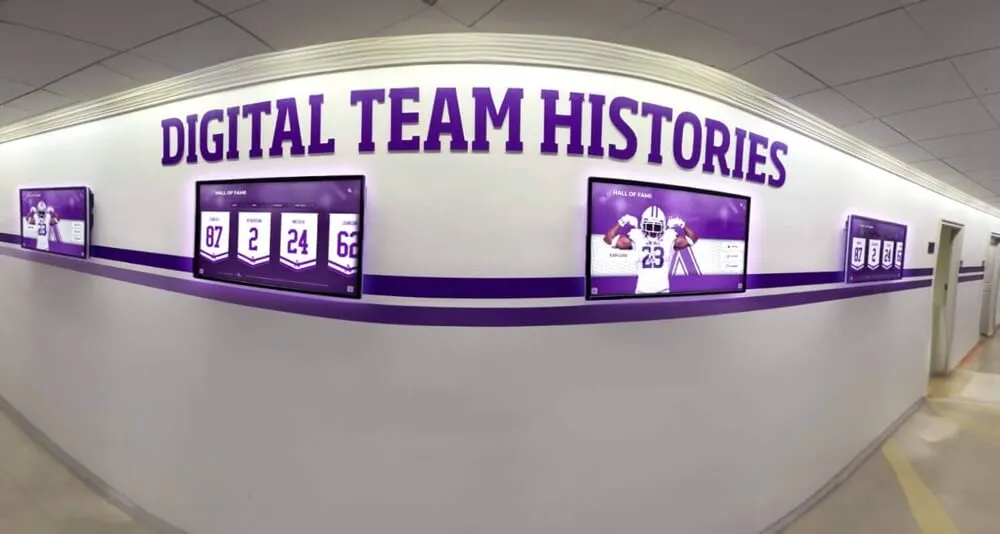
Quantitative Metrics: Total interactions and unique visitors over time; average session duration indicating depth of engagement; most-viewed profiles revealing audience interests; search query patterns showing what visitors seek; device and location data demonstrating reach beyond physical facilities; and content performance comparisons identifying successful formats and approaches.
Qualitative Feedback: Member surveys assessing satisfaction with recognition programs; inductee feedback about ceremony and recognition experiences; prospective member responses during facility tours; staff observations about visitor behavior and engagement; and testimonials documenting emotional connections and program impact.
Benchmarking and Goals: Establish baseline metrics following initial implementation; set engagement growth targets reflecting program maturity; compare performance across different content types and formats; identify seasonal patterns and adjust strategies accordingly; and demonstrate continuous improvement through trending analysis.
Return on Investment Assessment
While not all recognition program value proves directly measurable through financial metrics, organizations can document diverse benefits justifying technology investments.
Member Satisfaction and Retention: Track member satisfaction trends following recognition program implementation; monitor retention rates among long-tenured members feeling valued; assess membership referrals and word-of-mouth recruitment; and calculate lifetime value of engaged members compared to average members.
Recruitment and Growth Impact: Document prospective member conversion rates during facility tours featuring recognition displays; survey new members about factors influencing enrollment decisions; track competitive program enrollment trends; and assess scholarship or financial aid requirements influenced by program culture and tradition.
Fundraising and Development Outcomes: Measure donor participation rates among recognized individuals; track giving levels from alumni and honored members; assess major gift prospects cultivated through recognition touchpoints; and calculate sponsorship revenue from businesses supporting recognition programs.
Marketing and Reputation Value: Quantify social media reach and engagement from recognition content; assess media coverage mentioning organizational history and tradition; evaluate website traffic to online hall of fame platforms; and monitor search engine visibility for organizational tennis programs.
Operational Efficiency: Compare ongoing maintenance costs versus traditional physical display approaches; calculate staff time saved through self-service content management systems; assess cost avoidance from eliminated physical plaque production; and evaluate technology lifecycle costs relative to traditional alternatives.
Organizations demonstrating clear return on investment build cases for recognition program expansion, technology upgrades, and ongoing operational support ensuring tennis hall of fame displays remain current, comprehensive, and engaging across years and decades.
Future Trends in Tennis Recognition Technology
Digital innovation continues evolving recognition possibilities, and tennis organizations should understand emerging trends that may influence future implementation decisions and program enhancements.
Artificial Intelligence and Personalization
AI-powered systems enable increasingly sophisticated personalization creating more relevant experiences for diverse visitors with different interests and backgrounds.
Intelligent Content Recommendations: Systems suggesting related profiles based on viewing patterns; highlighting content matching visitor demographics or interests; creating dynamic featured content adapting to audience preferences; and personalizing navigation based on engagement behavior.
Automated Content Generation: AI-assisted profile writing accelerating content development; automated video highlight compilation from raw footage; statistical analysis and record identification; and natural language processing enabling conversational search interfaces.
Predictive Analytics: Forecasting which historical content will resonate with current audiences; identifying gaps in recognition coverage warranting content development; predicting optimal timing for featured content rotation; and suggesting improvements based on engagement pattern analysis.
Augmented and Virtual Reality Integration
AR and VR technologies create immersive experiences extending beyond traditional touchscreen interaction, potentially transforming how audiences engage with tennis recognition.
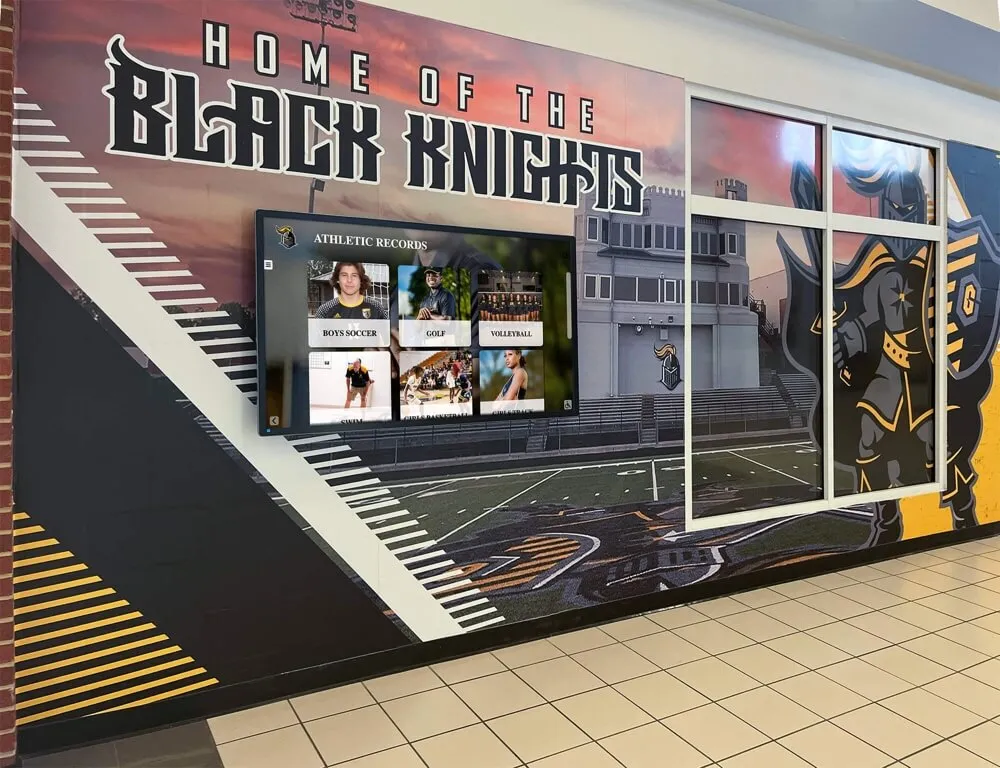
Augmented Reality Enhancements: Mobile apps overlaying historical information on physical courts and facilities; AR “time travel” experiences showing facilities as they appeared during different eras; virtual trophy cases viewable through smartphone cameras; and enhanced physical displays with digital overlays providing additional context.
Virtual Reality Experiences: Immersive virtual tours enabling remote visitors to explore recognition displays; VR recreations of historic matches and championship moments; 360-degree video placing viewers courtside during memorable competitions; and virtual hall of fame museums accessible worldwide regardless of geographic location.
Hybrid Physical-Digital Experiences: QR codes at physical displays linking to extended AR content; seamless transitions between touchscreen, mobile, and VR experiences; and complementary digital content enriching physical recognition installations.
Social Integration and Community Features
Recognition platforms increasingly emphasize social connectivity and community building, transforming static displays into dynamic networks connecting tennis communities.
User-Generated Content: Enabling members to submit photographs and stories about recognized individuals; crowdsourcing historical information from community members; facilitating comments and reflections on profiles; and supporting alumni networking through recognition platforms.
Live Integration: Real-time tournament results feeding recognition displays; automated updates celebrating recent champions; integration with tennis management software and scheduling systems; and dynamic leaderboards tracking current season competitions alongside historical records.
Community Storytelling: Member-contributed oral histories preserving personal memories; collaborative timeline development documenting organizational evolution; crowdsourced archive digitization projects; and social features enabling connections between tennis generations.
These emerging capabilities will continue transforming tennis hall of fame touchscreen displays from one-way recognition presentations into interactive community platforms that strengthen connections, preserve heritage, and celebrate achievement in increasingly sophisticated and engaging ways.
Conclusion: Elevating Tennis Recognition Through Technology
Tennis hall of fame touchscreen displays represent significant evolution in how clubs, schools, and organizations honor achievement, preserve heritage, and engage tennis communities. By overcoming fundamental limitations of traditional physical recognition—space constraints, limited information capacity, expensive maintenance, geographic restrictions—digital technology enables comprehensive recognition previously impossible for most tennis programs regardless of budget or facility size.
The most successful implementations balance tradition with innovation, preserving dignity and gravitas appropriate to honoring achievement while leveraging technology capabilities that create engaging, accessible, meaningful experiences. They establish clear selection criteria maintaining recognition prestige, develop compelling multimedia content that tells complete stories, integrate recognition throughout organizational culture and operations, and maintain sustained commitment to updates and engagement ensuring programs remain vital components of living tennis traditions.
Whether implementing first recognition programs or enhancing established halls of fame with modern capabilities, tennis organizations should approach technology as tool enabling better recognition rather than technology for its own sake. The goal remains honoring achievements appropriately, preserving tennis heritage comprehensively, inspiring current and future players, and strengthening communities around shared tennis passion.
Ready to explore how tennis hall of fame touchscreen displays can transform recognition at your club, school, or organization? Modern solutions like Rocket Alumni Solutions provide comprehensive platforms designed specifically for athletic recognition, enabling tennis programs to honor all deserving achievement without space constraints while creating engaging experiences that strengthen tennis culture and community. Best touchscreen software solutions offer intuitive management, rich multimedia capabilities, and proven reliability serving over 1,000 organizations nationwide.
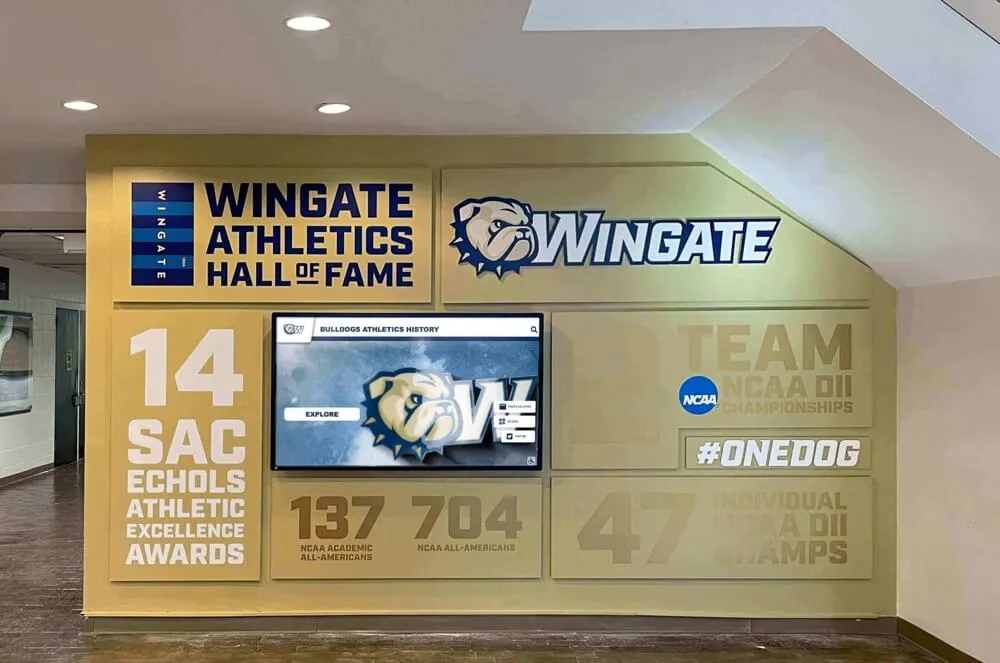
The champions, coaches, and contributors who dedicated themselves to tennis excellence deserve recognition matching their achievements. By implementing comprehensive tennis hall of fame touchscreen displays, organizations demonstrate that excellence is valued, traditions are preserved, and accomplishment becomes part of lasting legacies inspiring future generations to pursue their own tennis excellence. From local club champions to international tennis legends, comprehensive digital recognition displays ensure that tennis achievements receive the honor, visibility, and preservation they deserve.
